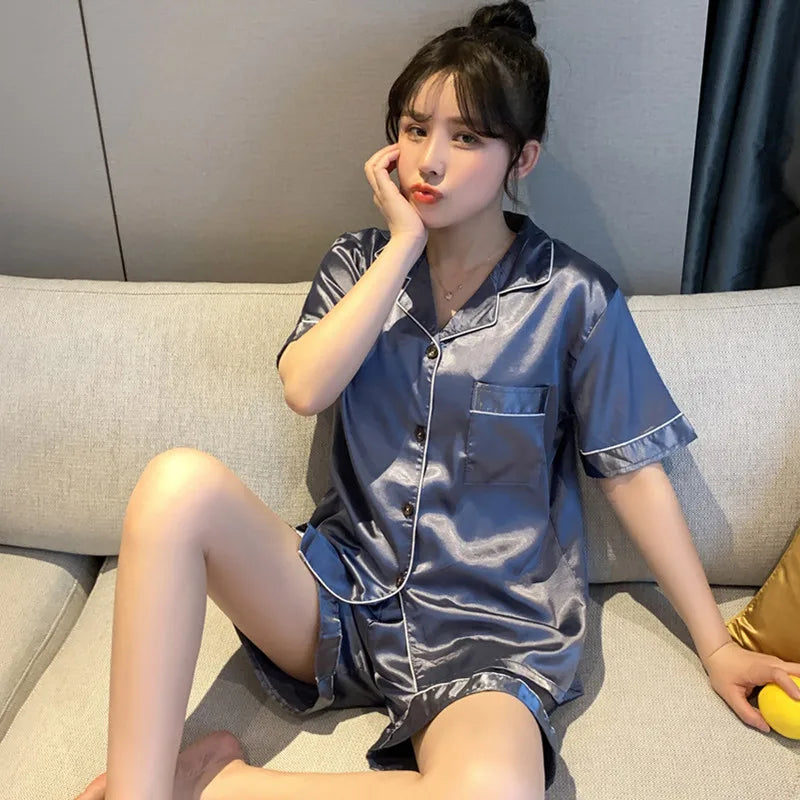How Many Onesies of Each Size Should You Have for Your Newborn?
Table of Contents
- Introduction
- The Importance of Onesies in a Newborn’s Wardrobe
- A Breakdown of Baby Sizes and Onesies
- Factors Influencing the Quantity of Onesies Needed
- Practical Tips for Selecting the Best Onesies
- Conclusion
- FAQ Section
As new parents, we often find ourselves lost in a sea of baby clothes, wondering about the essentials—especially when it comes to onesies. These versatile garments are a staple in any newborn's wardrobe, but how many do we really need, and in what sizes? With countless options available, it can be overwhelming to determine the right amount and sizes for our little ones. Today, we're diving deep into the world of baby onesies, shedding light on how many we should have of each size, and discussing factors that influence these decisions.
Introduction
Did you know that newborns can go through 10 to 12 clothing changes a day? This staggering statistic highlights just how crucial it is to have a well-stocked wardrobe of onesies ready for our little ones. Onesies, often dubbed as the ultimate baby clothing piece, provide comfort and ease for both babies and parents. They are designed to accommodate a baby’s frequent diaper changes while ensuring they remain cozy and stylish.
With the rapid growth that babies experience, knowing how many onesies to have in each size is vital to avoid unnecessary stress and ensure our little ones are well-prepared for their early months. By the end of this post, we will provide clarity on how many onesies to acquire across different sizes, the factors that influence our needs, and tips on selecting the right onesies for our babies.
We’ll cover the following key aspects:
- The importance of onesies in a newborn’s wardrobe
- A breakdown of baby sizes and how they correspond to onesies
- Factors influencing the quantity needed
- Practical tips for selecting the best onesies for our little ones
Let’s embark on this journey together to ensure we’re fully equipped for the delightful experience of welcoming a newborn into our lives.
The Importance of Onesies in a Newborn’s Wardrobe
Onesies are more than just cute outfits; they serve multiple essential functions for our babies. When considering how many onesies to buy, it’s important to understand their role in our little ones’ lives:
Comfort and Ease
Onesies are designed to fit snugly while allowing freedom of movement. This is crucial for newborns as they are still adjusting to the world outside the womb. The ease of dressing and undressing also means fewer frustrations for both the baby and the parent during diaper changes.
Versatility
Whether it’s a hot summer day or a chilly winter night, onesies can be layered or worn alone, making them suitable for various climates. They can be paired with pants, worn under dresses, or simply kept as standalone outfits, making them a must-have in any baby’s wardrobe.
Functionality
Most onesies feature snap closures at the bottom, allowing for quick and easy access during diaper changes. This functionality is particularly appreciated during those late-night changes when every second counts.
Styles and Variations
Onesies come in an array of styles, including long sleeve, short sleeve, kimono, and more. This variety ensures that we can find the perfect fit for our baby's needs, whether we're preparing for a summer outing or bundling up for winter.
A Breakdown of Baby Sizes and Onesies
When it comes to baby clothing, understanding size classifications is essential. Baby sizes often vary between brands, which can add to the confusion. However, we can categorize them into several key stages:
Newborn Size
Typically fitting babies up to 8 pounds, the newborn size is usually short-lived. Babies often outgrow this size in just a few weeks. Therefore, we recommend having 3 to 5 onesies in newborn size to ensure we have enough for those early days without overstocking.
0-3 Months
This size accommodates babies weighing between 8 to 12 pounds. Since infants tend to stay in this size longer, we suggest having 6 to 10 onesies in the 0-3 months category. This allows for growth while maintaining a sufficient rotation for daily wear.
3-6 Months
As babies continue to grow, the 3-6 month size is suitable for those weighing 12 to 16 pounds. At this stage, we recommend having 5 to 8 onesies. This quantity balances the need for regular changes with the slower growth rate compared to previous months.
6-12 Months
For babies in the 6 to 12 month range, which typically fits 16 to 20-pound infants, we should have 4 to 6 onesies. Babies at this age are often more active and may not require as many outfit changes as in earlier months.
12 Months and Beyond
Once babies reach the one-year mark, their clothing needs shift again. For this stage, 3 to 5 onesies should suffice, as growth tends to slow down.
Summary of Recommended Onesie Quantities by Size
| Size | Weight Range | Recommended Quantity |
|---|---|---|
| Newborn | Up to 8 pounds | 3-5 |
| 0-3 Months | 8-12 pounds | 6-10 |
| 3-6 Months | 12-16 pounds | 5-8 |
| 6-12 Months | 16-20 pounds | 4-6 |
| 12 Months+ | 20+ pounds | 3-5 |
Factors Influencing the Quantity of Onesies Needed
Understanding how many onesies to have is not just about size; several factors can influence our decisions:
Baby's Growth Rate
Every baby grows at a different pace. It’s important to monitor our baby’s growth to adjust our wardrobe accordingly. Some babies may outgrow sizes quickly, while others might stay in a size longer than average.
Laundry Habits
Our laundry routine plays a significant role in determining how many onesies we need. If we do laundry frequently, we can manage with fewer onesies. However, if laundry days are spaced further apart, having a larger stockpile is beneficial.
Seasonal Considerations
The season in which our baby is born can greatly affect our choices. For instance, babies born in warmer months may require more short-sleeve options, while those born in colder months will need long sleeves or even footed onesies.
Lifestyle Preferences
Our lifestyle also matters. If we frequently go out, we might want to have more stylish or themed onesies for outings. Alternatively, if we prefer staying at home, a smaller quantity might suffice.
Baby’s Activities
As babies grow and become more active, the need for durable onesies increases. Active babies might require more frequent outfit changes due to spills or diaper leaks, necessitating a larger stock.
Summary of Influencing Factors
- Growth Rate: Monitor how fast your baby is growing.
- Laundry Routine: Adjust based on how often you do laundry.
- Season: Consider the weather and clothing needs during that time.
- Lifestyle: Factor in how often you go out and what you prefer to dress your baby in.
- Baby’s Activity: Assess how active your baby is, influencing the need for changes.
Practical Tips for Selecting the Best Onesies
When shopping for onesies, we want to ensure we’re getting the best quality for our little ones. Here are some essential tips:
Fabric Quality
Opt for soft, breathable fabrics like organic cotton. These materials are gentle on a baby’s sensitive skin and are more sustainable than synthetic alternatives. Avoid fabrics with harsh chemicals or dyes that could irritate delicate skin.
Design Features
Look for onesies with snap closures, envelope necklines, or kimono styles. These features make dressing and undressing easier, especially during diaper changes.
Size Flexibility
Choose onesies that offer a bit of stretch, allowing for comfortable movement as your baby grows. Having adjustable sizes can help in accommodating growth spurts.
Seasonal Choices
Consider the weather when selecting onesies. For example, lightweight cotton for summer and thicker materials for winter will help keep your baby comfortable year-round.
Versatile Styles
Having a mix of styles—short sleeve, long sleeve, and different prints—can help you adapt to various occasions and settings, ensuring your little one is always fashionable.
Summary of Selection Tips
- Choose high-quality, breathable fabrics.
- Look for functional design features.
- Account for size flexibility.
- Select season-appropriate options.
- Mix styles for versatility.
Conclusion
Navigating the world of baby onesies may seem daunting at first, but with the right information, it becomes a manageable task. By understanding the different sizes and how many onesies we need for each, we can ensure our little ones are comfortable, stylish, and prepared for their early months.
Remember to consider factors like growth rate, laundry habits, seasonal needs, and lifestyle preferences when stocking up on onesies. Ultimately, the goal is not just to have enough clothing but to provide our babies with the comfort and ease they deserve.
As we embrace this exciting journey into parenthood, let’s take pride in curating a well-rounded collection of onesies that meets our babies’ needs. After all, at Relaxed Nights, we believe every moment is an opportunity to embrace comfort and elegance, even in our little ones’ wardrobes.
FAQ Section
How many onesies should I have in total for my newborn?
For newborns, having 3 to 5 onesies in the newborn size and 6 to 10 in the 0-3 month size is an ideal start.
What fabric should I choose for my baby’s onesies?
Opt for soft, breathable fabrics like organic cotton that are gentle on a baby's sensitive skin and avoid harsh chemicals found in synthetic materials.
How can I determine if my baby has outgrown a onesie?
Signs include tightness around the arms or legs, difficulty snapping or zipping, and any discomfort shown by your baby during wear.
Should I buy more short-sleeve or long-sleeve onesies?
This depends on the season your baby is born in. If born in summer, prioritize short sleeves; for winter, stock up on long sleeves.
How often should I replace my baby’s onesies?
Regularly check for wear and tear. As babies grow quickly, it's wise to reassess their wardrobe every few months to ensure all items are suitable for their current size.
By keeping these insights in mind, we can confidently navigate the world of baby clothing and provide the best for our little ones.



